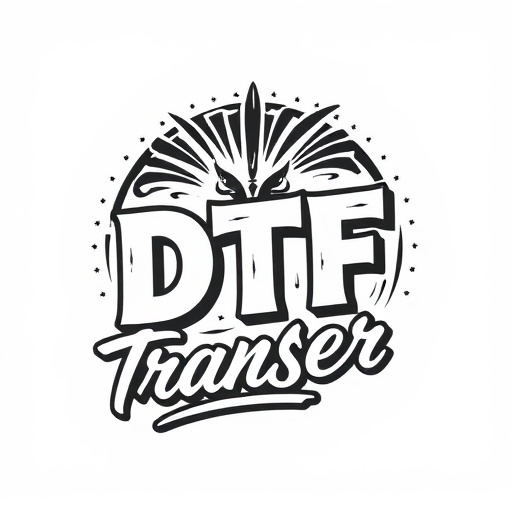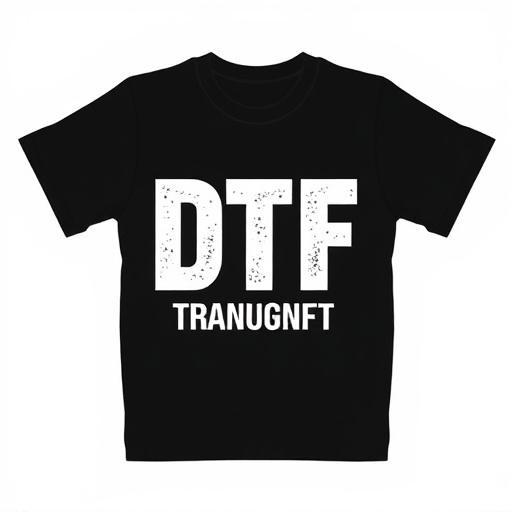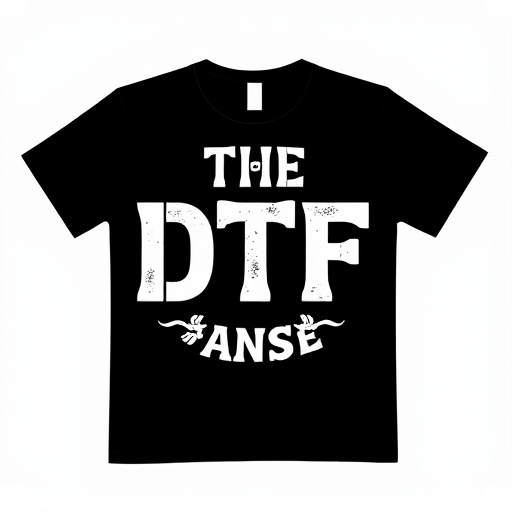DTF (Direct-to-Film) Technology revolutionizes image preservation through DTF Printing, directly applying ink to film for vibrant, durable DTF Prints resistant to fading and damage. Ideal for archival purposes, these prints maintain original clarity and color accuracy over time. Specialized materials like polypropylene or polyester films coated with UV-resistant ink ensure longevity against wear, tearing, and fading. DTF transfers have found applications in various industries, from fashion to automotive, offering efficient, high-quality solutions. Proper storage and care are crucial to maintain the vibrancy and longevity of DTF prints.
Discover the future of film preservation with long-lasting DTF (Direct to Film) transfers that offer unparalleled durability and resistance to wear and tear. This cutting-edge technology revolutionizes how we safeguard cherished memories and art, ensuring they remain vibrant for generations. In this comprehensive guide, explore the advantages of DTF prints over traditional methods, the materials behind their longevity, and diverse applications across industries. Learn expert tips for caring for your DTF prints to preserve their quality indefinitely.
- Understanding DTF Transfer Technology
- Advantages of DTF Prints Over Traditional Methods
- Materials Used in DTF Printing and Their Durability
- The Process of Creating Long-Lasting Film Transfers
- Applications of DTF Transfers in Different Industries
- Caring for Your DTF Prints: Tips for Preserving Quality
Understanding DTF Transfer Technology
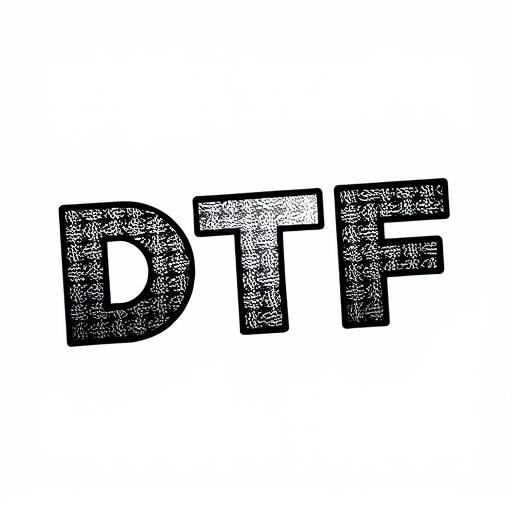
The DTF Transfer (Direct-to-Film) technology has revolutionized the way we reproduce and preserve images. This innovative process allows for high-quality DTF Printing, offering a durable and resistant alternative to traditional printing methods. By directly applying ink to film, DTF Transfers create sharp, vibrant prints that are less susceptible to fading or damage from washing and wear.
This technology is particularly beneficial for archival purposes, as it ensures DTF Prints maintain their original clarity and color accuracy over time. Unlike other transfer methods, DTF minimizes the risk of smudging or scratching, making it ideal for creating lasting memories and preserving important documents or artwork.
Advantages of DTF Prints Over Traditional Methods

The advent of Direct to Film (DTF) transfers has revolutionized the way we preserve and share our cherished memories. Unlike traditional methods that often involve multiple steps and intermediate media, DTF printing offers a streamlined process. With DTF prints, images are directly transferred onto various materials like vinyl or canvas, eliminating the need for intermediaries like inkjet printers or photo papers. This not only simplifies the workflow but also enhances durability.
One of the significant advantages of DTF prints is their resilience to washing and wear. The direct application of the image ensures that the colors remain vibrant and the details sharp even after extensive use. Traditional methods, on the other hand, can suffer from color fading, smudging, or cracking over time. Moreover, DTF transfers are less prone to damage during handling, making them ideal for creating keepsakes that will last for generations without compromising quality.
Materials Used in DTF Printing and Their Durability

The materials used in Direct-to-Film (DTF) printing play a pivotal role in ensuring the longevity and durability of the final prints. This modern printing technique employs a variety of specialized coatings and inks that are meticulously designed to resist fading, scraping, and other forms of damage. DTF transfers use high-quality films and inks that offer superior resistance to washing and wear compared to traditional printing methods.
The key materials include durable polypropylene or polyester films, which serve as the base for the transfer. These films are coated with a layer of UV-resistant ink, ensuring that the prints remain vibrant even after prolonged exposure to light. Additionally, a protective laminate is often applied to further safeguard against wear and tear, making DTF transfers an excellent choice for items intended for frequent handling or outdoor use. This combination of advanced materials contributes significantly to the durability of DTF prints, guaranteeing their longevity and visual appeal over time.
The Process of Creating Long-Lasting Film Transfers

Creating long-lasting film transfers involves a meticulous process known as DTF (Direct to Film) transfer or printing. This innovative technique allows for the reproduction of high-quality images directly onto durable film stock, ensuring longevity and resistance to everyday wear and tear. The process begins with digitizing the original source material, often from vintage films or precious photographs, at extremely high resolutions. These digital files are then carefully prepared and optimized for DTF printing.
Specialized equipment is used to expose the film stock with precision, transferring the digitized image directly onto the surface. This method results in vibrant, accurate colors and sharp details, mirroring the original source. The finished DTF prints or transfers are not only visually stunning but also designed to withstand regular handling and exposure to light without significant fading or damage.
Applications of DTF Transfers in Different Industries

The versatility of DTF Transfers (Direct to Film) has led to their widespread adoption across various industries, revolutionizing how images and designs are applied onto a wide range of materials. From fashion and textiles to signage and automotive, DTF Printing offers an efficient and durable solution for creating high-quality prints resistant to fading, washing, and wear. In the textile industry, DTF Transfers are used for printing on fabrics, allowing designers to create vibrant, long-lasting garments and accessories. The direct application method ensures that designs maintain their vibrancy even after multiple washes, making it a popular choice for custom apparel.
In the world of signage and advertising, DTF prints have become a game-changer. They are used to produce eye-catching banners, posters, and window graphics that can withstand outdoor conditions, including exposure to UV rays and varying weather temperatures. This durability makes DTF Transfers ideal for businesses seeking to create visually appealing, long-lasting marketing materials. Moreover, in the automotive sector, DTF Technology is employed for applying graphics on vehicles, ensuring a seamless finish and superior resistance to fading and wear, enhancing the overall aesthetic appeal of automobiles.
Caring for Your DTF Prints: Tips for Preserving Quality
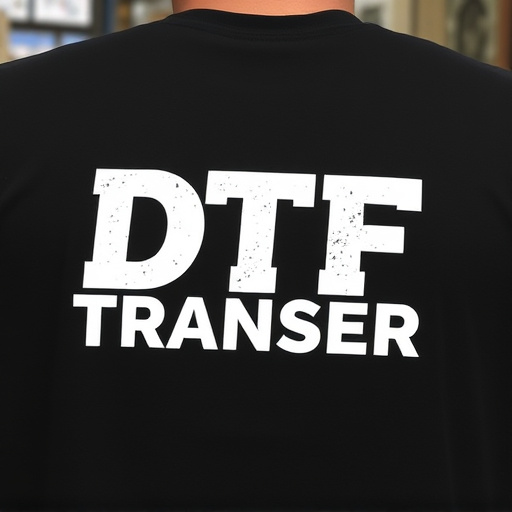
Caring for Your DTF Prints: Tips for Preserving Quality
When it comes to preserving the quality of your long-lasting DTF (Direct to Film) transfers, a few simple steps can go a long way. Firstly, avoid exposing your prints to excessive moisture or water, as this can damage the delicate film surface and cause fading or smudging over time. Store your DTF prints in a dry, cool environment away from direct sunlight, which can also accelerate the aging process.
Additionally, be mindful of how you handle and store your DTF prints. Use protective cases or enclosures to keep them safe from scratches, dust, and other physical wear. Avoid stacking heavy items on top of your prints, as this could cause creases or deformations. Regularly inspect your DTF prints for any signs of damage, and address issues promptly to ensure their longevity and maintain the vibrancy of the colors and details.






